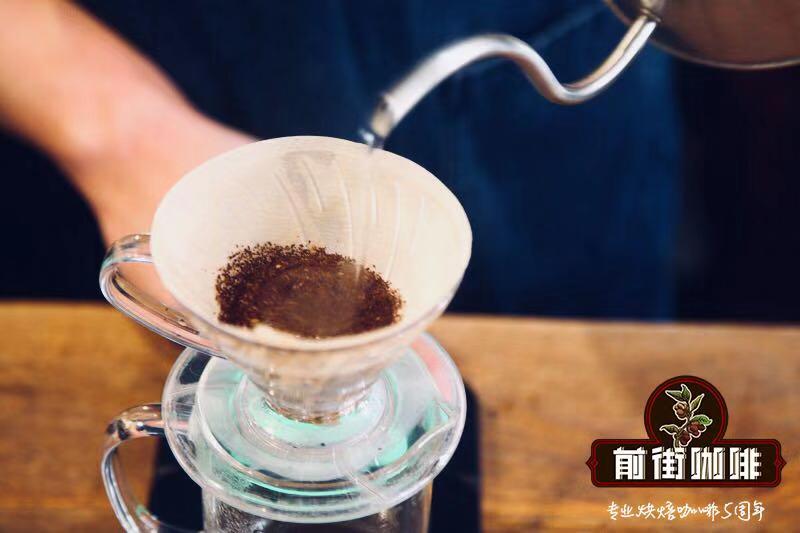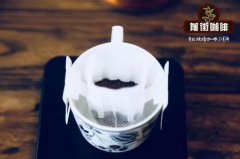Coffee roasting training | where can I learn coffee bean roasting training in Guangzhou?

Professional coffee knowledge exchange more coffee bean information please follow the coffee workshop (Wechat official account cafe_style)
The principle and process of coffee roasting
We must first understand that raw beans are hard seeds in coffee berries, including water, chlorogenic acid, protein, alkaloids, caffeine, fats, sugars and so on. At the same time of baking at high temperature, the above substances will appear chemical changes such as Mena reaction and Stryker degradation, resulting in coffee tannic acid, tobacco acid, aromatic esters, alcohols, carbohydrates and other substances that affect the flavor of coffee.
So, when it comes to roasting coffee beans, we can think of it as a process of rising temperature, but it must be under control. Because of this, the temperature and heating rate during baking are the main reasons for the difference in flavor.
From the actual baking process, we can observe the change in the color of raw beans, from the turquoise when the water content is high, to a whitish yellow after baking at high temperature to remove most of the moisture. As the temperature continues to rise, it gradually yellowes, and when it reaches the temperature at which the Mena reaction occurs, the surface obviously turns brown and deepens gradually. If you continue to heat up, there will be carbonization, coffee beans will become dark black, the surface is still bright with grease, if you do not stop heating, there will eventually be a fire.
In addition to the change in color, the volume of coffee beans will also change. In addition to a small degree of thermal expansion, there will be two bursts at different temperatures, increasing the volume by as much as 60%. At the same time of volume expansion, the total weight will also be reduced due to the loss of moisture and the removal of silver skin, and the weight will be reduced by about 1220% as the baking is shallow to deep.
In addition to the baking temperature and time, we can preliminarily judge the roasting degree of coffee beans by the appearance color, volume change and weight loss ratio. In addition, it can also be detected by Agtron caramelization spectrum analyzer to accurately get the depth of baking degree.
Understand the design principle of coffee roasting machine
In the baking process, the functions that can be controlled are gas firepower, exhaust valve, boiler speed; the temperature observation values provided are bean temperature in the furnace, air outlet temperature, and bean viewing window and sampling stick to judge the appearance and smell of raw beans.
The rotating boiler is to let the raw beans be heated evenly, and the good baffle design in the boiler makes it more lively and leaping when stirring, so as to avoid point scald. When the rotational speed is slow, the raw bean is in contact with the boiler for a long time; when the rotation is fast, the raw bean is thrown in the hot air for a long time, both of which will affect the flavor. However, the speed of the boiler cannot be adjusted on the baking machines in Germany, Japan and the United States.
In addition to firepower, the distance between the gas fire row and the boiler, called fire distance, is also a difficult problem in machine design. The modification of the Japanese brand bean dryer is to increase the number of gas nozzles and stretch the fire distance at the same time. In fact, the problem of uniform heating is also considered. The new machine made in Taiwan changes the design of gas nozzles to three rows and double switches, igniting according to the amount of baking, and increasing the flexibility of operation.
When ignited and heated, the heat energy will heat the coffee beans through conduction, convection and radiation.
In addition to the full hot air machine is mainly convective heat, we often hear of semi-hot air and direct fire type of these two machines. To put it simply, the wall of the baking room of the direct-fire bean dryer is perforated to allow the radiant heat to act directly on the raw beans. Such a machine can also be equipped with a far-infrared kit to maximize the effectiveness of the radiant heat.
The semi-hot air machine mainly uses conduction heat and convection heat. When the firepower is fixed, the size control of the exhaust valve is the main factor affecting the convection heat.
Steps to actually operate a coffee roaster
Start the machine, light the fire, wait for the temperature of the boiler to rise to a certain degree, turn off the fire and put the coffee into the raw beans.
At this time, the raw beans at room temperature will have heat exchange with the hot boiler, and it can be observed from the instrument that the boiler temperature will drop, and according to the number of raw beans, the time of heat exchange will increase. Until the heat absorption of raw beans is complete, the temperature of the boiler begins to rise, which is called the "temperature recovery point".
Before the raw beans are put in, whether the fire is turned off or not, everyone has different baking habits, but this will affect the temperature recovery point, so we should pay attention to it.
At first, the temperature will rise faster, but with the yellowing of bean color and the decrease of moisture, the temperature will gradually slow down and stabilize. If you use a sampling stick to remove raw beans, you can obviously smell the change in taste, from the astringent taste of grass evaporated to the aroma similar to toast or sweet potato, the silver skin will gradually peel off, and the exhaust valve can be opened moderately. Let the silver skin blow out. Before the first burst, the temperature rises slowly, and the raw beans absorb a lot of heat from the hot air, ready to burst.
From the sporadic burst sound, gradually dense, the temperature rises faster, a large number of smoke is discharged, and then it needs to be vented properly through the exhaust valve. It should be noted that excessive exhaust will lead to excessive convective heat and bad flavor.
After continuous heating, the coffee beans are brewing for a second burst after the first burst, with a temperature difference of 25 ℃. When the second burst, the smoke intensified, coffee beans gradually turned dark brown, slightly scorched aroma.
Before dropping the beans, start the cooling plate fan and stir to cool the coffee beans in the shortest possible time to keep the flavor good.
Guangzhou can go to coffee training institutions to study
END
Important Notice :
前街咖啡 FrontStreet Coffee has moved to new addredd:
FrontStreet Coffee Address: 315,Donghua East Road,GuangZhou
Tel:020 38364473
- Prev

Which is the best coffee roasting degree? what are the coffee roasting methods?
Professional coffee knowledge exchange more coffee bean information please pay attention to the nature of coffee (Wechat official account cafe_style) coffee, from beginning to end is a kind of crop, its interlinked planting, picking, processing, transportation, roasting, so that the taste of coffee becomes three-dimensional coherent. As one of the most important links, coffee roasting is the only one that we can control. But...
- Next

How long is the correct roasting time for coffee beans? can I drink freshly roasted coffee beans right away?
Professional coffee knowledge exchange more coffee bean information please follow the coffee workshop (Wechat official account cafe_style) first of all, we need to start with the coffee roasting process. The roasting process of coffee is the process of roasting green coffee beans and then turning them into brown beans. In this series of changes, coffee roasting needs to go through five stages: warm-up dehydration period.
Related
- Beginners will see the "Coffee pull flower" guide!
- What is the difference between ice blog purified milk and ordinary milk coffee?
- Why is the Philippines the largest producer of crops in Liberia?
- For coffee extraction, should the fine powder be retained?
- How does extracted espresso fill pressed powder? How much strength does it take to press the powder?
- How to make jasmine cold extract coffee? Is the jasmine + latte good?
- Will this little toy really make the coffee taste better? How does Lily Drip affect coffee extraction?
- Will the action of slapping the filter cup also affect coffee extraction?
- What's the difference between powder-to-water ratio and powder-to-liquid ratio?
- What is the Ethiopian local species? What does it have to do with Heirloom native species?

